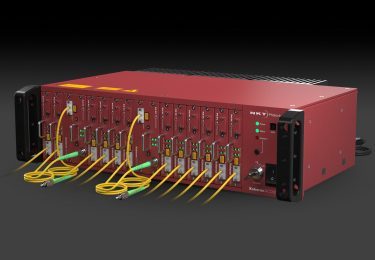Why use DAS for smart cities?
Today’s CCTV and discrete sensors give an incomplete picture of what is going on in the city. A DAS system gives you access to a lot of information otherwise unavailable to you.
DAS systems use optical fibers as sensors and let you measure sound along their entire length. It works over long distances and large areas, without any disruption, and sends responses back in real-time.
You can use the existing grid of fiber optic communication networks that are already laid out across countries and oceans. The long stretches of fiber provide you with thorough and continuous data.
DAS systems can be used for a wide range of monitoring applications in the smart city, such as:
- Traffic patterns and density
- Road conditions
- Vehicle type
- Vehicle acceleration, speed, and direction
- Infrastructure monitoring to prevent deterioration of bridges, roads, and tunnels
- Assisting the development of autonomous driving
- Crime detection
Why is Koheras the ideal laser for DAS?
Our Koheras lasers are an excellent choice for DAS systems. To get the highest detection range, you need the lowest possible phase noise – which you get from the Koheras lasers.
They are industrial-grade OEM lasers with a rugged design, a stable performance unaffected by different environmental conditions, and wide temperature ranges in the field.
World-leading acoustic sensing systems use our Koheras lasers due to the intrinsic low phase-noise, the narrow linewidth, and the long coherence length that enable measurement ranges in the range of 100 km.
The most reliable low-noise laser on the market
Our fiber laser design is inherently compact and robust. It is developed for a long lifetime in demanding environments where uptime is critical.
With documented low failure rates, we proudly deliver the most reliable low-noise lasers on the market.
We have more than 15,000 Koheras lasers deployed in the harshest environments on – and off – the planet. We have lasers on oil-rigs, submarines, wind turbines, and even in space.
With over 20 years of experience, we know they last.
What are the advantages of using DAS?
Distributed Acoustic Sensing, DAS, is a sensing system based on light. The system listens in on everything that is going on in the city. Intelligent software translates the sounds to information and alerts that let you manage traffic and prevent damage to infrastructure.
Optical fibers are perfect sensors
When you use optical fiber as sensors for smart city applications, you get a long list of advantages:
- Fibers are already installed throughout most cities
- Fibers enable measurements of thousands of locations, continuously
- Fibers can cover a large geographical range
- Fibers are immune to electromagnetic interference
- Fibers do not need or carry any electrical power
- Fibers are highly reliable and cost-efficient
Ultra-precise detection eliminates uncertainties and saves time
DAS systems are based on interferometric sensing. An ultra-stable, low-noise laser – such as our Koheras lasers – is built into an interrogator that sends light into the fiber and detects the backscattered light.
Complex algorithms analyze what is going on along the fiber, with high precision.
The interpretation software detects every incident but ensures that only relevant information is passed on to the operators.
Ultra-precise detection reveals the exact position of the incident, eliminates uncertainties, and saves time.
Features
Low phase-noise and long coherence length provide sensing distances of +100 km
Accurate pinpointing of intrusion or threat
Industrial reliability due to robust laser design
Designed for OEM-integration
Maintenance-free 24/7 operation
Do you need a laser for your DAS system?
Use DAS systems to monitor all kinds of critical assets and infrastructures, such as power plants, airports, oil-rigs, borders, conveyor belts, pipelines large facilities, etc.






